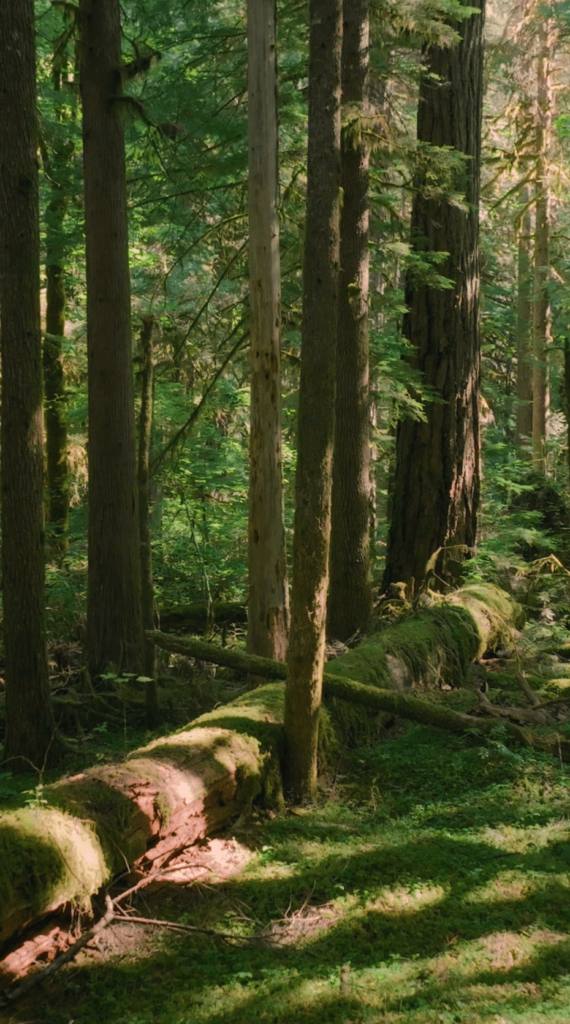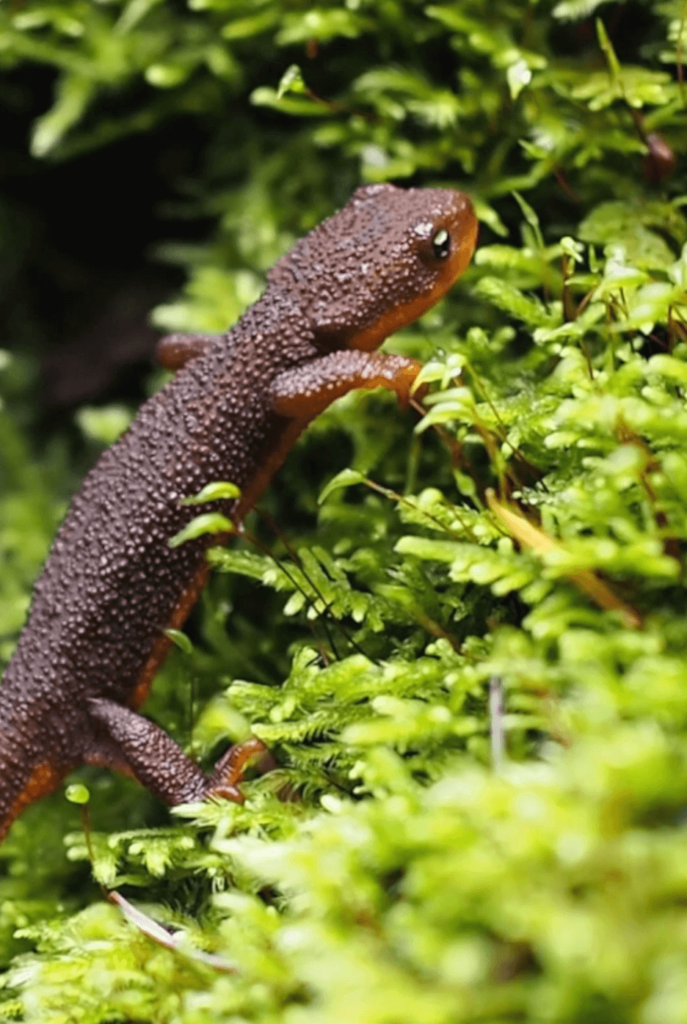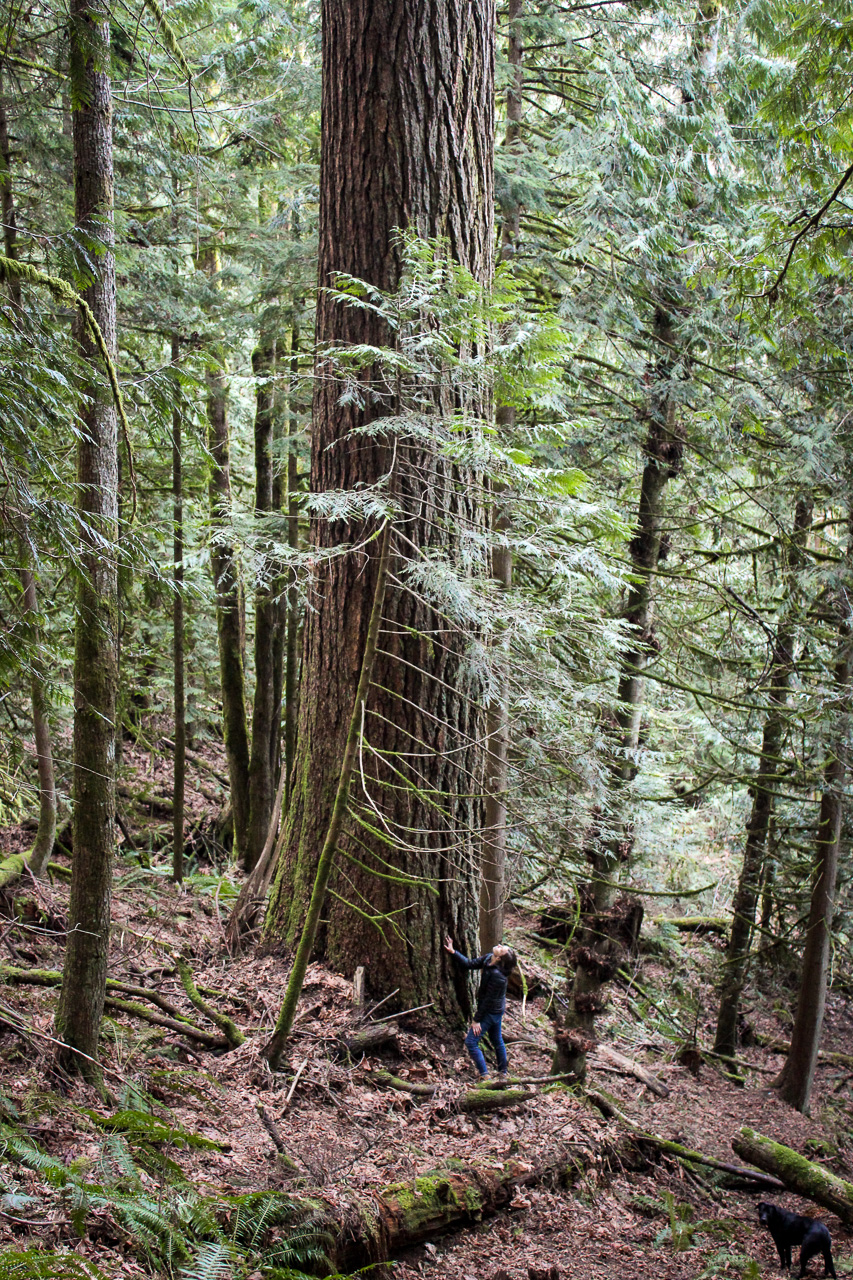Northwest Washington’s iconic forests inspire wonder in all who behold them. Each towering tree tells a story spanning generations and invites contemplation of the forest legacy we leave to future generations. RE Sources envisions a future in which restored forest ecosystems support climate-resilient communities, thriving fish and wildlife populations, and a sustainable forestry economy.
RE Sources’ Future Forests Campaign is a science-based, grassroots effort to transition from industrial logging practices to ecological forest management in critical parts of the Lake Whatcom and Nooksack River watersheds. By protecting mature forests and restoring dense tree plantations, we can help our communities adapt to climate impacts, while improving wildlife habitat, expanding recreational opportunities, and ensuring sustainable timber production in perpetuity. Intact forest ecosystems help buffer us from winter flooding and release more water in the dry summer months – which plantations don’t do well.
How will we do it?
- Educate and mobilize Northwest Washington communities to support ecological forest management across private and public forestlands. In addition to in-person forums and online webinars, we are developing a series of videos that show ecological forestry in practice and explain its many benefits. Check out our video: The Future of Forests with Dr. Jerry Franklin.
- Catalyze local-level action to protect mature forests and restore dense plantations on public land. RE Sources will watchdog local timber sales on state-owned lands (managed by the Dept. of Natural Resources) to ensure that native, mature forests over ~100 years old are protected from clearcut logging. We will also advocate for thinning practices to restore monoculture plantations. This makes forests more biodiverse and resilient while providing wood products and long-term job opportunities.
- Leverage local action and public demand towards larger state-level changes. Sometimes the best way to change the status quo is to show an alternative model can really work. The growing “community forest” movement provides a unique opportunity to demonstrate how economic, cultural, environmental goals can be balanced according to the input of local community members, stakeholders, and governments. RE Sources aims to advance innovative forestry efforts here in NW Washington with the hope that these approaches can be utilized by other communities throughout the Pacific Northwest.

The Legacy of Industrial Logging
Since European settlement, the Mt. Baker Foothills and the rivers that run through them have been transformed by aggressive logging. Today, private timber corporations and the Washington State Department of Natural Resources (DNR) manage hundreds of thousands of acres across Whatcom and Skagit Counties to maximize short-term revenue. In general, these forests are not managed to employ the most people or to maximize wood production, but instead to maximize return on investment. Industrial forest management entails clearcutting on short 40-year rotations, heavily spraying herbicides, and replanting monoculture tree plantations that don’t offer the same protections for water and wildlife that intact, diverse forests do.
For decades, scientists have meticulously documented how industrial logging has destroyed wildlife habitat and degraded water quality. Scientists have exposed how intensive clearcut-plantation forestry contributes to higher river levels in the winter, which increases erosion, elevates turbidity (how much sediment is muddying the water), and degrades salmon habitat. More recent science has found that streams in clearcut and replanted basins produce 50% less water during summer months than streams in unlogged basins (Perry & Jones 2016; Segura et al. 2020). Notably, this lack of summer water can persist for decades after the initial logging of the basin, which means that clearcutting today will reduce water levels well into the late 21st century.
Climate change only exacerbates these problems as more precipitation falls as rain instead of snow. Climate change is already contributing to more extreme rainfall events, leading to catastrophic floods such as the November 2021 floods that devastated NW Washington communities. At the same time, climate change is worsening droughts across the state, leading to less and less water in the driest time of the year. The science is clear: the business-as-usual approach to managing forests must evolve in the era of climate change.
Ecological Forest Management: Forests as ecosystems, not crops

Northwest Washington is home to some of the most biologically productive forest ecosystems in the world, but the potential of these forests is squandered by current logging practices. For millennia, these sprawling forestlands have supported indigenous communities, diverse flora and fauna, and abundant rivers teeming with salmon and steelhead. The health of our rivers, salmon runs, wildlife, and communities is intimately tied to the responsible stewardship of our forestlands, especially as the impacts of climate change become more pronounced.
Ecological forest management offers an alternative approach to the industrial model. Instead of managing forests as crops, ecological foresters treat forests as complex ecosystems that provide numerous benefits. Ecological foresters wield chainsaws in innovative ways that imitate natural disturbances and create complex forest mosaics made up of trees of different sizes and species. These patchy mosaics spur greater plant biodiversity and provide excellent wildlife habitat for birds, bears, deer, elk, and many other critters.
Ecological forestry is not a “lock it up” approach to forest management. With hands-on stewardship, we can restore dense plantations and improve overall forest health, while protecting certain critical forest stands from commercial logging. Ecological forestry entails thinning at different intensities across large areas, which is more labor-intensive than conventional logging practices. By providing a more steady flow of logs to mills, ecological forestry can limit the booms and busts that have dominated Washington’s timber economy over the past 150 years and help promote sustainable, long-term employment opportunities for rural communities in the years to come.
One of the most significant advantages of ecologically-managed forests is their ability to limit the impacts of floods and slow the release of water in late summer, when farmers and fish need it most. A growing body of science suggests that ecological forestry can provide more water in late summer if applied at scale, including right here in the Mt Baker Foothills. Additionally, complex and biodiverse forests are more resilient to other climate impacts, such as wildfire or pest outbreaks. Strategically deploying ecological forestry in key areas (like drinking watersheds) can help buffer nearby communities from the worst climate impacts down the road.
The Lake Whatcom watershed represents one of the greatest opportunities in our region to demonstrate ecological forestry at scale. Lake Whatcom is the drinking water source for more than 100,000 people (and growing), and despite years of community opposition, industrial clearcut logging and pesticide use continues across thousands of acres of state and private forestland in the watershed. Climate change is expected to increase algae-inducing phosphorus in the lake, which means our community must take proactive action to ensure the lake provides clean and affordable water for generations to come.
Ecological foresters use these techniques to increase forest complexity and limit the impacts of commercial logging:
Thinning from below
Harvesting small, understory trees.
Thinning from above
Harvesting large, dominant trees.
Conserving mature forests
And limiting harvest near streams and on steep slopes.
Small gap cutting
Very small cuts that create openings for wildlife and the next generation of trees.
Longer harvest rotations
Letting trees grow longer before cutting.
Refraining from herbicides
And encouraging natural regeneration
Thinning at different intensities
…across a stand (“variable density thinning”).
Take Action
Ready to join the Future Forests campaign to advance ecological forestry in Northwest Washington? Check out out Take Action tab for ways to get involved. Make sure you’re signed up for our email and Action Alerts so you never miss a chance to act on behalf of Northwest Washington’s forests.

